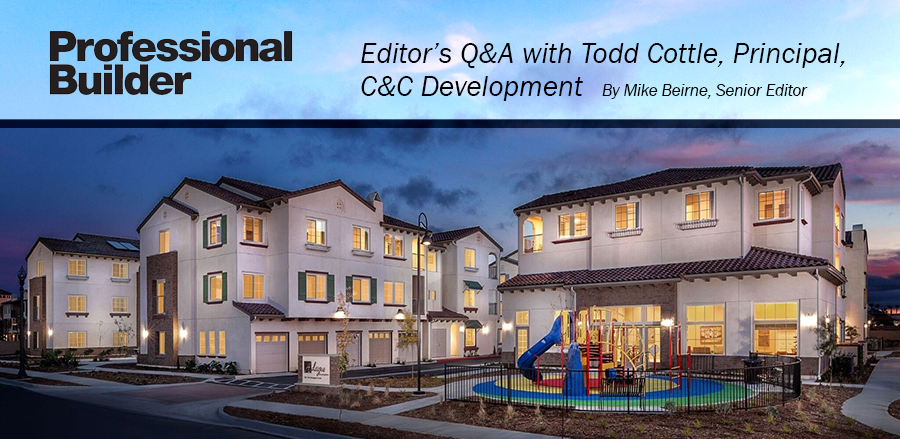The Aesthetics And Challenges Of Building Affordable Housing
Q: Why is C&C driven to build affordable housing? Was this market segment the original focus?
A:When C&C Development was established more than 30 years ago, our mission was and continues to be the creation of affordable housing, either by new construction or by the acquisition and rehabilitation of existing housing. Organized as a for-profit builder with a diverse portfolio of properties, C&C is fully committed to developing affordable housing. Our affordable housing projects throughout Southern California serve a wide spectrum of people, including working families as well as seniors and individuals who are homeless and/or living with mental disabilities. We believe we are here to make a difference.
Q: C&C works with top architects and has a portfolio of award-winning projects. Do aesthetics help alleviate potential local opposition or win over local government to support a project?
A: One of the primary impediments to developing affordable housing in our market area is opposition from adjacent homeowners because they erroneously believe affordable housing will negatively affect their property values, which, of course, many studies show it does not. One of the reasons for this belief is that people in general, whether homeowners or renters, tend to think affordable housing is of lesser quality in design and construction. They believe it attracts “those kinds of people.” To counter this unfortunate perception, we retain award-winning architectural firms, which provide services to many of the leading market-rate builders, but also have extensive experience and expertise in all facets of affordable housing design. Consequently, our housing developments are comparable in both appearance and construction to market-rate projects. The result has been, and continues to be, 100 percent success in gaining local government entitlements, even in communities that are known to be difficult environments for affordable housing development. Once our projects are built, any residual opposition quickly disappears. When it comes to affordable housing, seeing is believing.
Q: How do you engage existing residents and surrounding property owners when taking on a rehab or adaptive-use project?
A: Whether it’s new developments or the rehab or adaptive reuse of an existing property, we approach the community outreach process the same way by personally and proactively connecting with all stakeholders who live within the project’s area of influence or have in some way indicated interest in the project. We’ve learned over the past 30 years that stakeholders, including government officials, are more receptive to a project if the developer takes the personal initiative to reach out to the community one on one, and if the stakeholders believe the developer is listening in earnest to their recommendations and is willing to incorporate their ideas into the project plan and/or design, if possible.
Q: Affordable housing endeavors tend to be public/private partnerships with the local government. Is there a possibility that purely private undertakings could be doable in California for affordable or at least entry-level housing?A: Public/private partnerships have been and will continue to be critical to affordable housing development in California. These partnerships have become even more important with the loss of city redevelopment agencies, other sources of gap financing, the scarcity of affordable land—especially in urban areas—and increasingly higher construction costs. We don’t see these circumstances changing, and so affordable housing development will continue to be challenging at best, even with public/private partnerships, but pretty much impossible without them. As far as entry-level housing is concerned, these projects are also increasingly difficult to develop but can pencil out, especially if the developer is building a mixed-income project with public support that includes both affordable and market-rate housing. Nevertheless, while it may be somewhat easier, the development of entry-level housing still faces the same challenges of funding, land availability, and construction costs as affordable housing, making these projects also difficult to build. At the end of the day, public/private partnerships are necessary for affordable and entry-level housing developments under almost any scenario.
Q: What are the advantages of having your own construction staff?A: There are three major advantages when we serve as the general contractor, which we don’t always do. First, we have more direct control over the bidding and construction process; second, we have greater assurance of construction quality; and third, generally the cost of construction is lower than if we use a third-party general contractor. However, each project is different, and we tend to use an independent GC with whom we have a strong working relationship if the project is especially challenging in terms of such factors as location and/or its design, such as a higher density project in a constrained urban area. Our top concern when constructing an affordable community is quality of construction and long-term durability. Due to the requirement that each development maintains its affordability for a 55-year period, it is imperative that the project is built correctly and that construction decisions do not compromise the quality of materials used and systems installed.
Q: What are the upsides and downsides of handling property management? Builders who recently entered into multifamily and rental tend to hire a third party or sell the asset. How did C&C develop its property management skills?
A: We believe that it’s not only imperative to construct high-quality housing, but to also provide for a safe and secure environment for our residents to call home. Our ability to meet this requirement is directly tied to our in-house property management capabilities. Our on-site managers, leasing, compliance and accounting staffs are highly trained professionals and experts in their various disciplines. Their expertise makes a daily difference in the lives of the thousands of individuals who call our property home. It also enables us to maintain the quality of each community and meet and exceed the commitments that we’ve made to our local communities and public agency partners.
Click here to view article in Professional Builder

